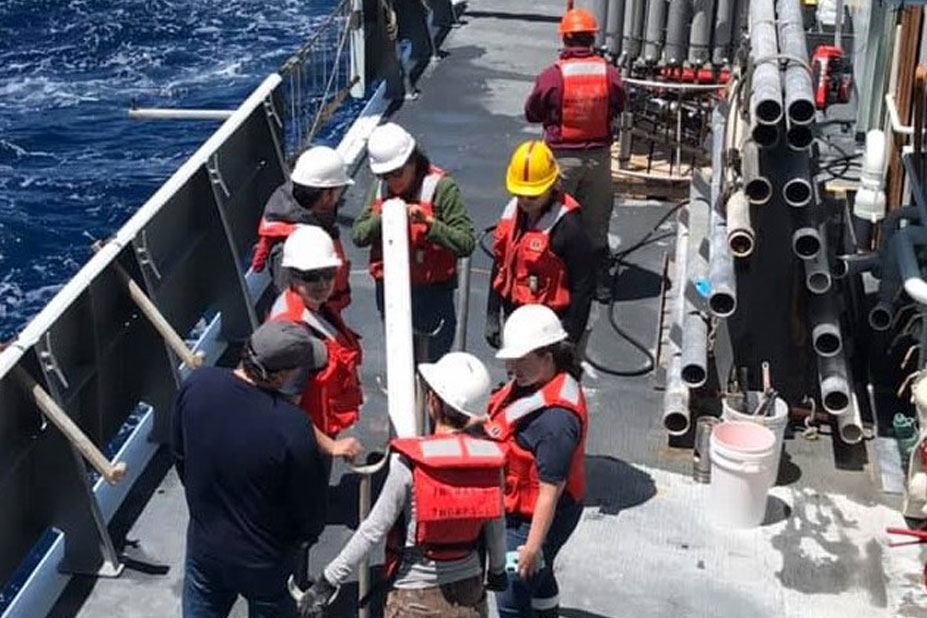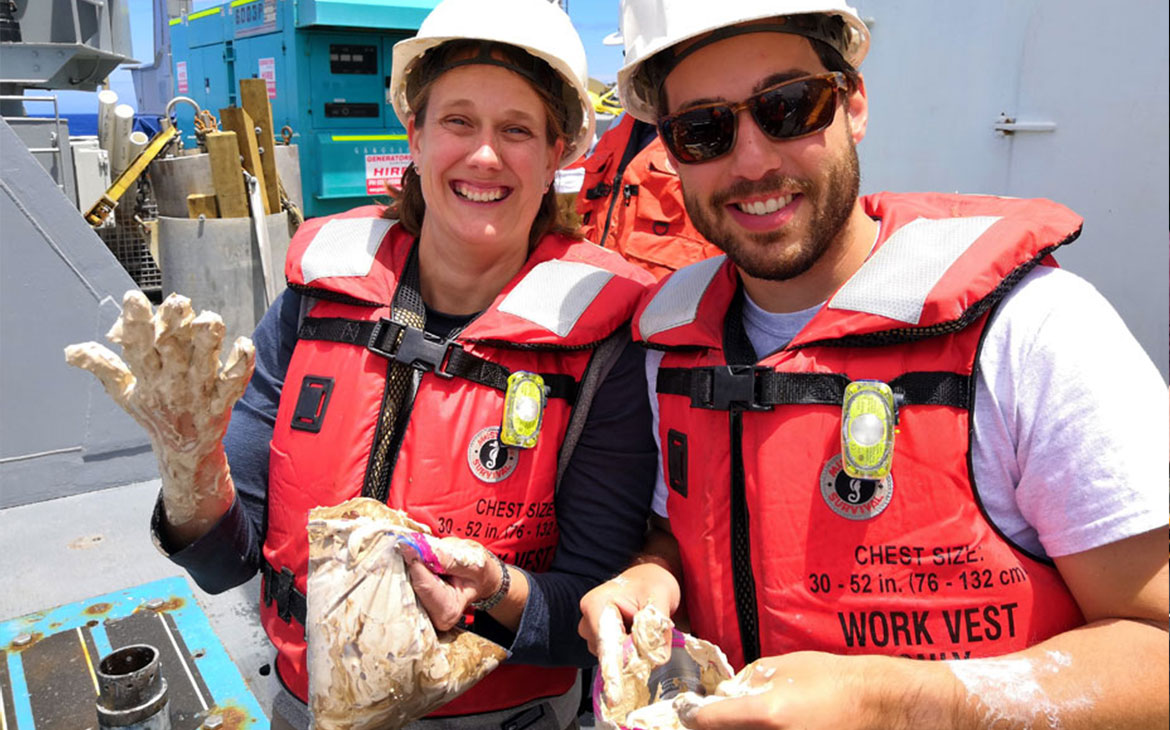Getting mud from the bottom of the ocean is not easy. For decades, oceanographers have used tough, seemingly indestructible trawl wire to get samples — but to get bigger and better cores it takes something stronger. DMCS professor Liz Sikes recently led the first successful US coring voyage using stronger line (aka rope) rather than wire, to collect jumbo cores from the ocean’s floor. The sediment cores come aboard as a single 6 meter pipe of mud — so an important part of the operation is to section that long cylinder of mud into workable 1.5 meter lengths so they can be scanned, cataloged and sampled. The coring effort is arduous, so every sample is saved, sometimes in bags for analysis later. The Rutgers team have just returned from 45 days coring in remote parts of the Southern Ocean and are looking forward to working up the samples.


